Car rentals are one of those travel chores we’d all love to skip, but usually can’t. For most trips, we just default to Hertz, National, or Avis, the familiar names that have fleets of identical sedans waiting at airports.
Then there’s Turo, which brands itself as the “Airbnb for cars.” Instead of pulling from a corporate fleet, you rent directly from someone’s personal inventory.
On paper, that sounds intriguing. In practice, after giving Turo a try myself, I found there are situations where it genuinely makes sense, and others where the traditional rental desk still has the upper hand.
This is my honest take on how Turo compares to traditional car rentals, and where each option actually makes sense.
Turo is a car-sharing marketplace where you can book a wide range of vehicles in many locations worldwide.
In This Post
Car Selection: Variety vs. Standardization
One of the biggest differences between Turo and traditional car rental companies comes down to car choice.
With traditional car rental companies, you’re usually picking a category, “midsize,” “full-size,” “SUV” and hoping whatever’s left on the lot fits your needs. The fine print phrase “or similar” usually means you shouldn’t count on getting the exact model you pictured.
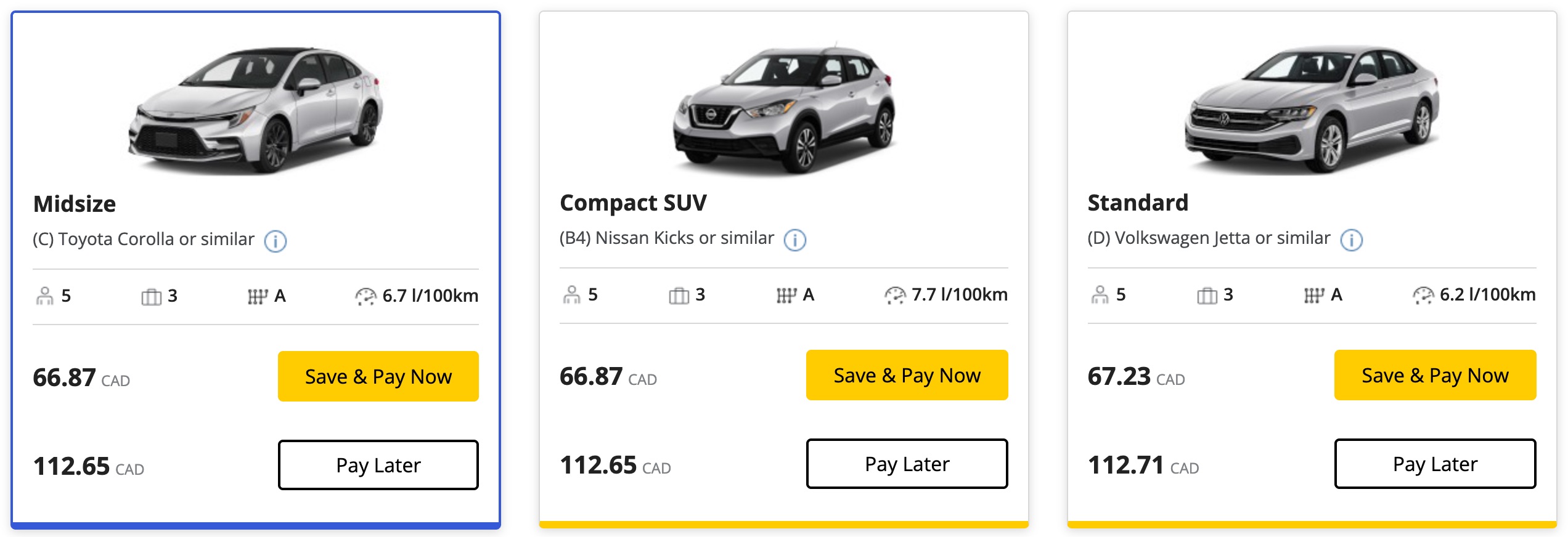
Turo flips that model. You choose the exact car you want, whether that’s a Tesla Model Y, a convertible for a fancy date, or even something quirky like a Jeep with a rooftop tent for a road trip.
It’s a chance to make the car part of the trip instead of just transportation.
For me, this was one of Turo’s biggest selling points. If you’ve ever thought about buying an EV or upgrading to a luxury car, Turo doubles as an extended test drive.
You get to live with the car for a few days, not just circle the dealership lot for 15 minutes.
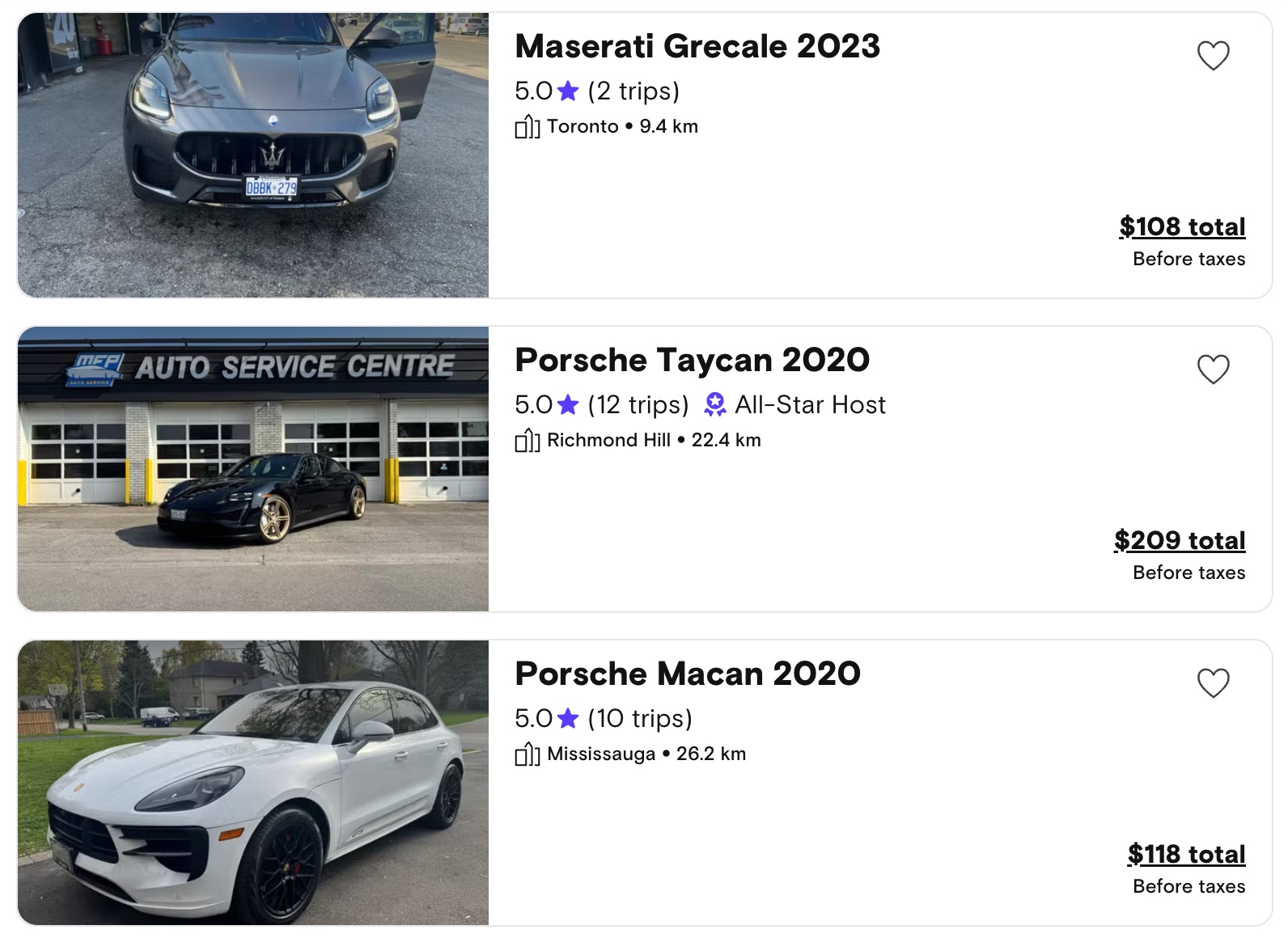
Traditional rental companies keep things predictable and standardized (which is sometimes exactly what you want), while Turo opens the door to variety and personalization.
Experience: The Counter vs. The Host
Renting from a traditional company usually means following a familiar routine: line up at the counter, sign the paperwork, decline several insurance upsells, and eventually head to the lot to collect your assigned vehicle.

It’s standardized and predictable, though not always efficient, especially if they give you a hard time when you try to decline those insurance packages.
That said, top-tier status with certain programs can streamline the process. For example, National Car Rental’s Executive Elite members can bypass the counter entirely and choose any car from the lot.
It’s fast and convenient — but still limited to status holders and whatever vehicles the agency has on site.
In the past, some agencies even offered complimentary pick-up and drop-off services within a reasonable distance of their offices.
These days, that perk has mostly disappeared, and unless you’re renting directly from the airport, you’ll often need to arrange your own way there via public transit or rideshare services.
This can be inconvenient, especially if your flight arrives outside of operating hours or if airport pricing is too steep and you’re renting off-site.
Turo flips this experience on its head. Pickup and drop-off are arranged directly with the host, which often means far more flexibility.
Some hosts deliver to the airport, some to your hotel, and others will meet you wherever it’s convenient. In my case, a host once dropped a car off at my hotel and then rode home on a Segway scooter — something you’d never see from Hertz.

Drop-off can also be flexible. On a trip to Ottawa, I picked up a car on Turo near the airport for a few days, but when it came time to return it, the host happened to be headed downtown.
She simply collected it from my hotel lobby, which saved me both time and hassle.
Of course, this host-driven model can also be less consistent. While many hosts provide excellent service, the experience varies from one booking to the next, unlike the uniform policies you’d find at Hertz or Enterprise.
For travellers who value efficiency, skipping the counter and driving away in minutes is a definite advantage. For those who prefer reliability above all else, traditional agencies may feel safer.
Pricing & Value
For standard vehicles, traditional rental companies often come out cheaper.
The main reason is insurance: most premium credit cards include rental car coverage, which allows you to decline the collision damage waiver (CDW) at the counter and avoid one of the biggest extra costs.
If you’re simply looking for a full-size or a midsize sedan, agencies like Hertz, Avis, or National usually offer the better deal, especially if you can also access a corporate or partner rate.
For example, Hertz extends discounts to American Express Platinum Card and RBC® Avion Visa Infinite† cardholders.
Where Turo stands apart is with unique and higher-end cars. The platform’s selection is far broader. Everything from Teslas to sports cars to camper-style SUVs, and often priced more reasonably than what a traditional rental company would charge for the same category.

In my case, I’d actually never driven a Tesla before. I’m a bit of a slow adopter, so this was the perfect chance to finally try one. I was curious about one-pedal driving with regenerative braking, Full Self Driving, and the real cost of charging.
At first, I was skeptical about one-pedal driving, but after just a short while I got used to it and honestly, it turned out to be more comfortable than I expected.
The FSD feature was equally impressive; I was amazed at how capable it felt, though I still found myself paying about 120% attention, just in case.
Since my condo’s EV chargers were down for maintenance, I had to rely on a nearby Supercharger. To my surprise, the cost wasn’t that much cheaper than filling up a gas car, which was an eye-opener in terms of what owning one might actually look like day to day.
Overall, the experience gave me a much clearer sense of what life with a Tesla would really be like.
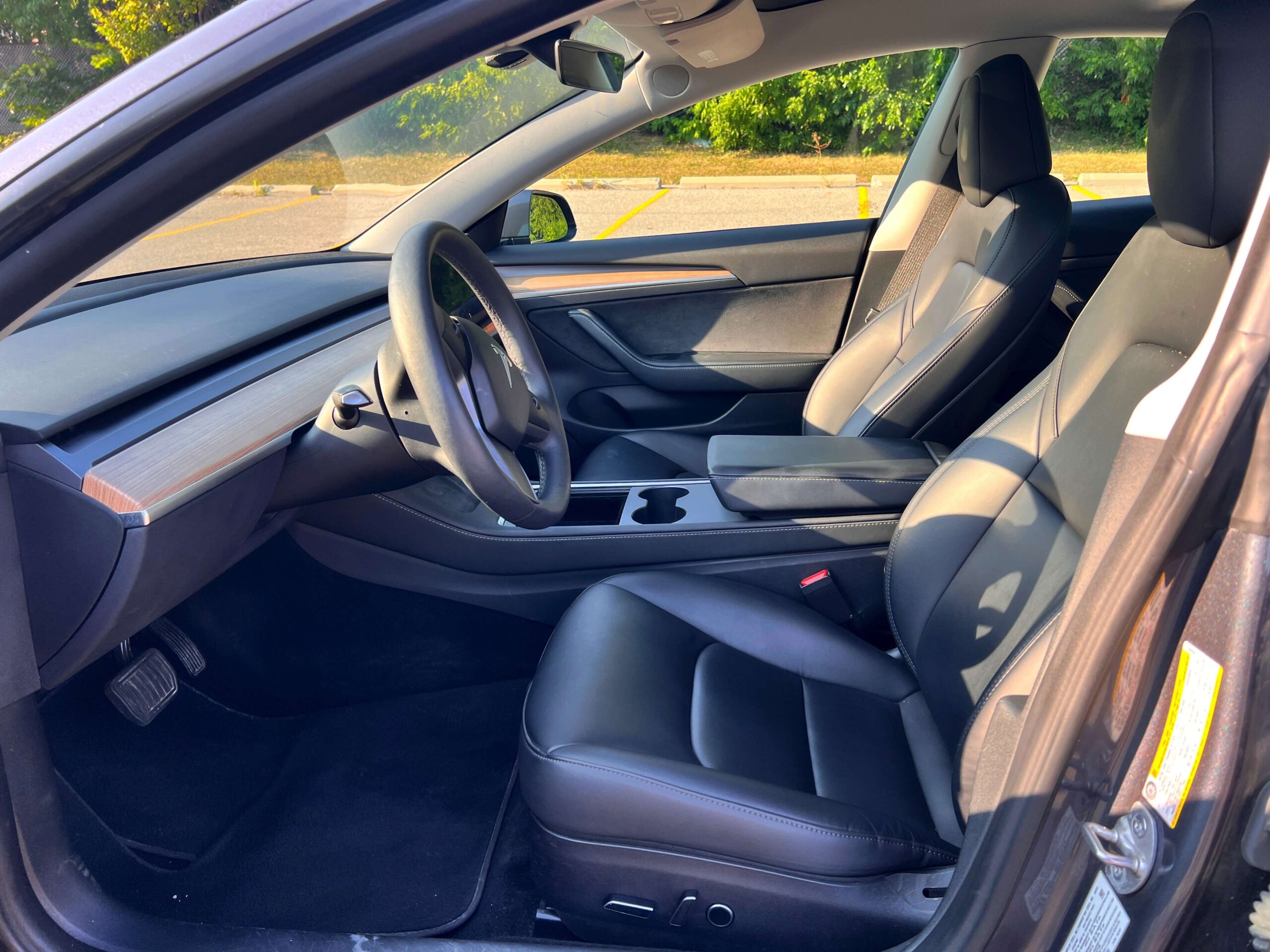
Fees are another difference. With traditional agencies, the base price can look reasonable, but concession recovery charges, facility fees, and persuasive upsells at the counter can inflate the total quickly.
Smaller independent agencies can be particularly aggressive with the guilt-trip sales pitch for insurance.
Turo’s pricing tends to be more transparent. Coverage options are shown upfront, and you know exactly what you’re agreeing to before pickup.
That said, it isn’t perfect. Delivery fees, for example, aren’t always clearly broken out, and you may need to do your own math to figure it out.
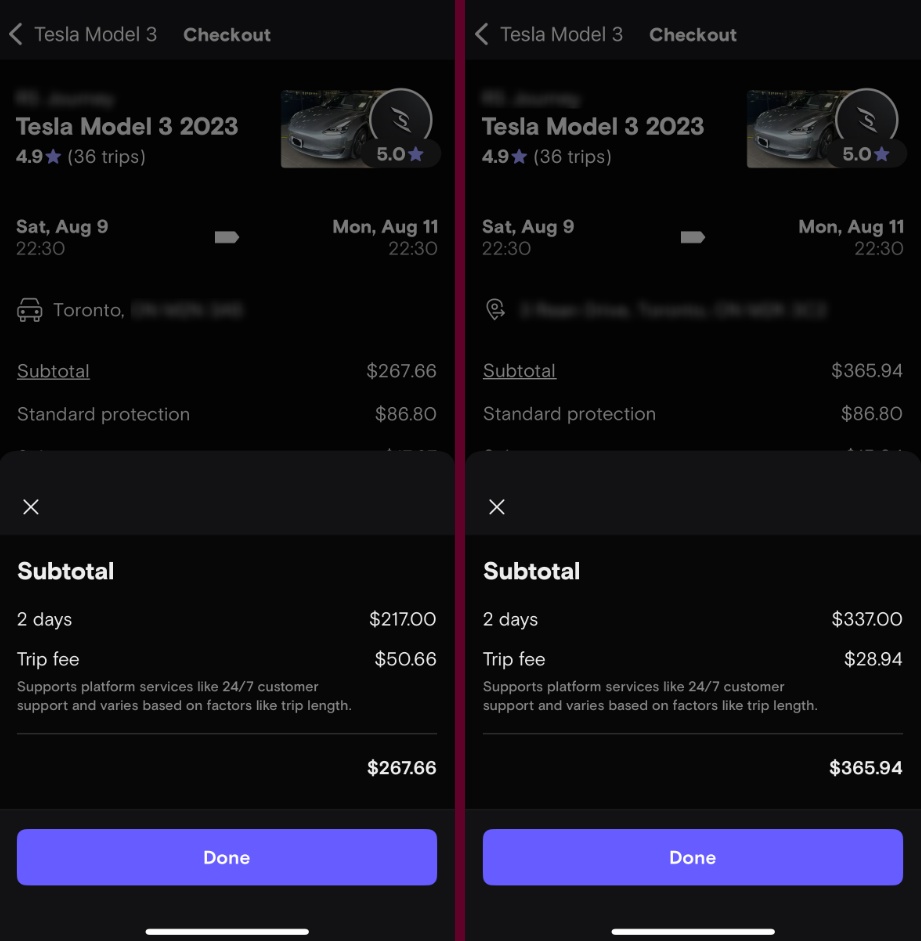
There are also a couple of built-in savings with Turo.
Adding a second driver is free, whereas rental agencies often charge extra unless you have top-tier status.
And for younger travellers, Turo in Canada doesn’t tack on a “young driver fee,” while most agencies impose steep surcharges of $15–25 per day on drivers under 25.
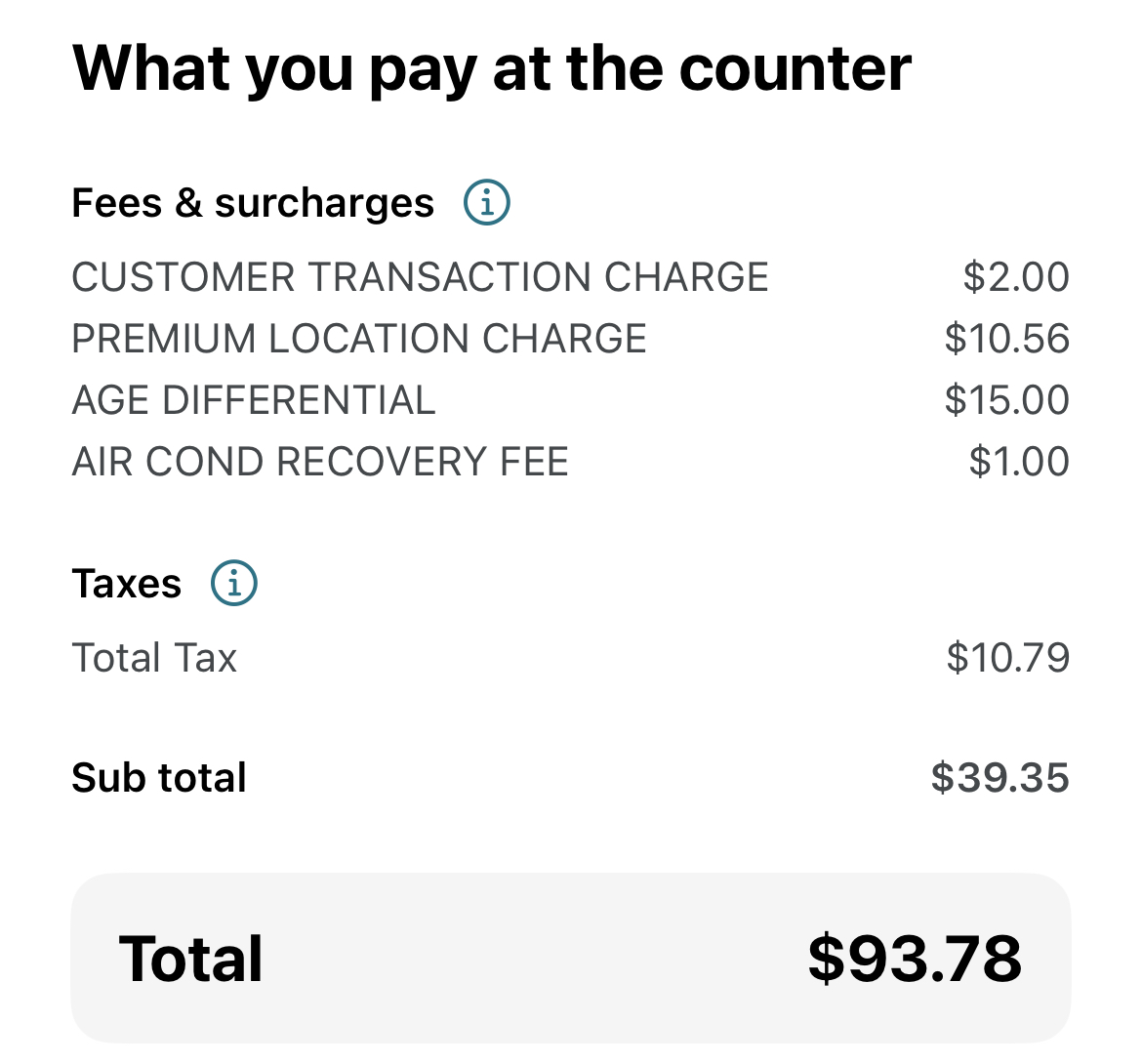
In fact, some rental agencies have further restrictions. For example, Hertz doesn’t allow young drivers to rent electric vehicles like Tesla at all.

For road trips with friends or younger renters, those differences alone can tilt the math in Turo’s favour.
Ultimately, traditional agencies provide scale and discounted rates that suit most standard rentals, while Turo offers flexibility, transparency, and better value when you want something beyond the ordinary.
Miles, Points & Insurance
From a rewards perspective, Turo generally codes as a travel purchase (not transit), which means you can still earn a decent rewards with the right credit card.
For example, you could earn 3 Scene+ points per dollar spent with the Scotiabank Passport® Visa Infinite Privilege* Card, 2 Membership Rewards per dollar spent with the American Express Platinum Card or American Express Gold Rewards Card, and 1.25 Avion points per dollar spent with the RBC® Avion Visa Infinite†.
| Credit Card | Best Offer | Value | |
|---|---|---|---|
|
70,000 MR points
$250 annual fee
|
70,000 MR points | $1,676 | Apply Now |
| 110,000 MR points | $1,581 | Apply Now | |
| 35,000 Avion points^ | $580 | Apply Now | |
|
Scotiabank Passport® Visa Infinite Privilege* Card
Scotiabank Passport® Visa Infinite Privilege* Card
80,000 Scene+ points
$599 annual fee
|
80,000 Scene+ points | $451 | Apply Now |
Scene+ is also easy to redeem against this kind of travel charge, which helps keep out‑of‑pocket costs tidy.
Periodically, Amex Offers include targeted Turo credits (e.g., $50 back on $150–200 spend), which can sweeten the deal further.

The trade‑off is insurance. Most credit card CDW policies don’t cover peer‑to‑peer car‑sharing platforms, so the usual “decline the agency CDW and rely on your card” play generally doesn’t apply to Turo.
You’ll need to choose one of Turo’s protection plans (or accept the risk), and the added daily cost can erase any savings you thought you were getting.
The good news is that you can see your exact options with pricing before making the booking, meaning no one is trying to upsell you or guilt you into buying protection.
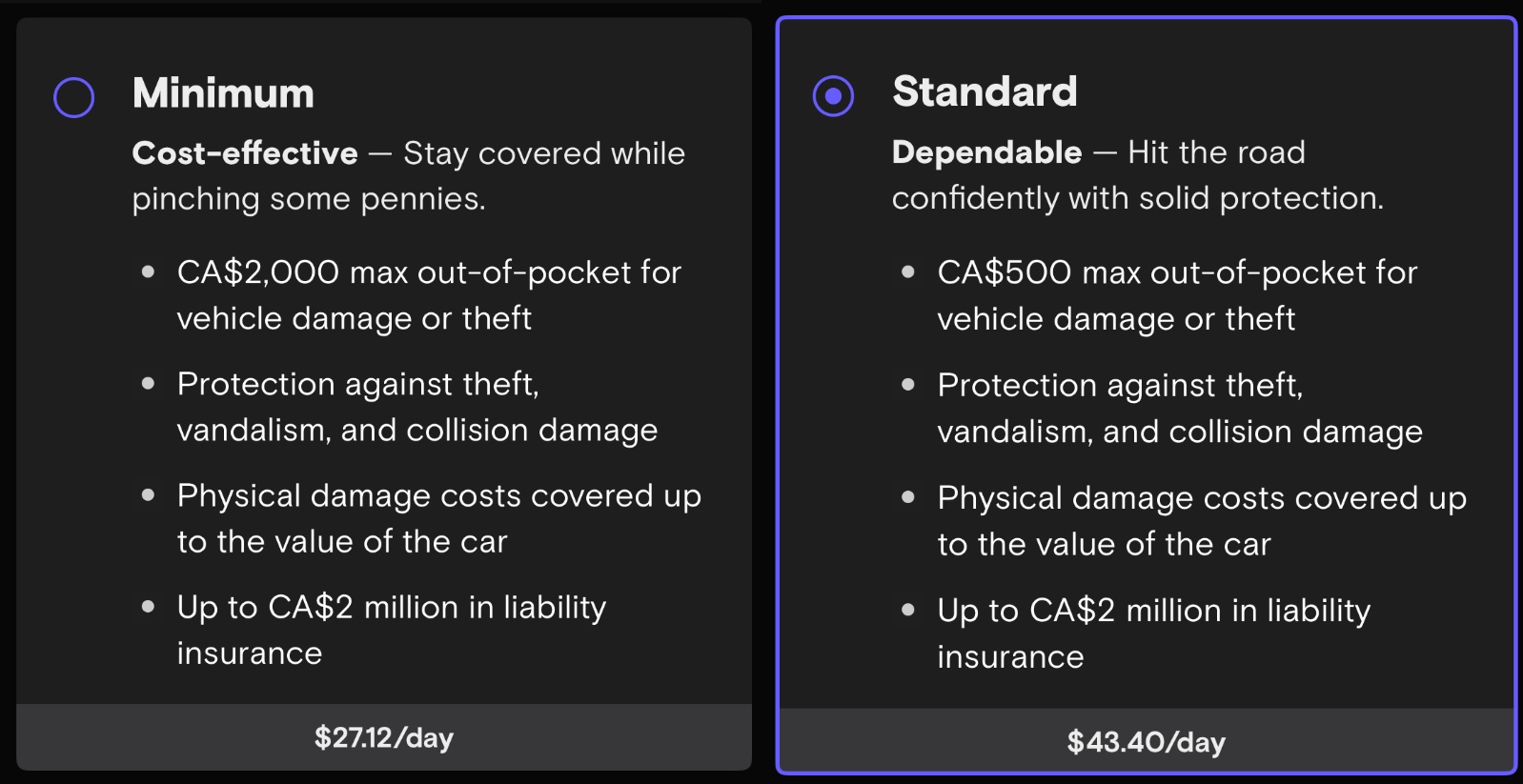
With traditional agencies, the opposite is true: if your card includes rental coverage and the vehicle/terms are eligible, you can decline CDW and save a meaningful amount each day.
There’s also a loyalty angle. Turo doesn’t have a points or status program, whereas Hertz, National, Avis, and Enterprise award points/credits toward free rental days and offer elite perks like Executive area access, vehicle upgrades, and priority service.
If you value earning free rentals or you rely on status to skip lines and pick any car on the lot, the legacy agencies still have the edge.
Conclusion
Turo and traditional rental companies serve different needs, and neither is a clear-cut winner.
If you’re after predictability, elite perks, and the ability to decline CDW using your credit card insurance, then sticking with Hertz, National, or Avis usually makes the most financial sense — especially for standard vehicles.
Turo, on the other hand, brings flexibility and variety. You get to pick the exact car you want, avoid certain extra fees like second-driver or young-driver surcharges, and in many cases enjoy a more transparent booking process.
For travellers who want something unique — whether that’s testing an EV for a weekend or driving something more memorable than a midsize sedan — Turo can be the smarter option.
From a Miles & Points perspective, Turo counts as a travel purchase and can earn rewards with the right credit card. But without credit card insurance coverage or a loyalty program, you lose some of the built-in advantages of traditional agencies.
At the end of the day, it comes down to priorities. For budget-friendly, everyday rentals, conventional agencies still hold the edge. But if you value choice, flexibility, or just want to add a bit of fun to your trip, Turo is worth keeping on your radar.
For most of my travels I still lean toward traditional car rental companies, but Turo has its moments for the right traveller.






















